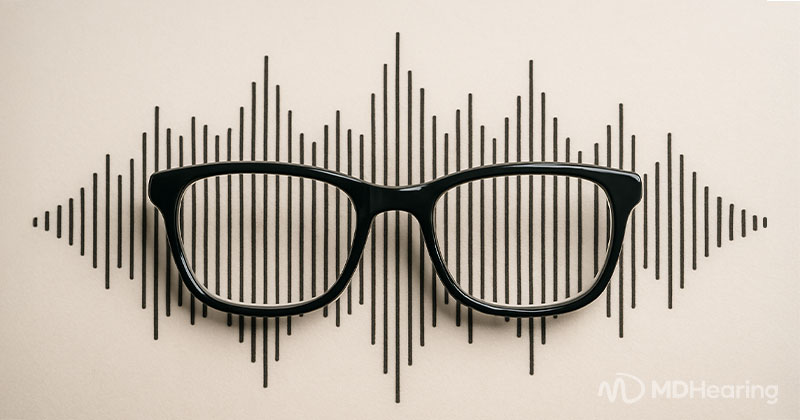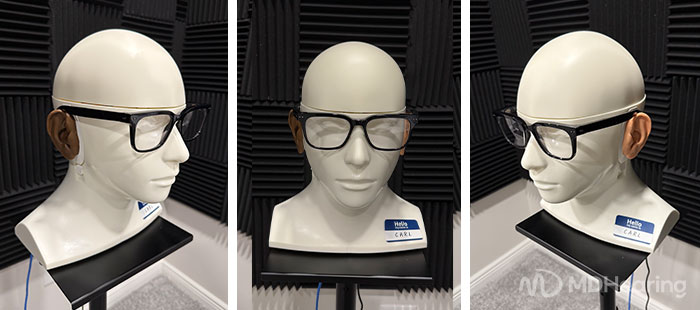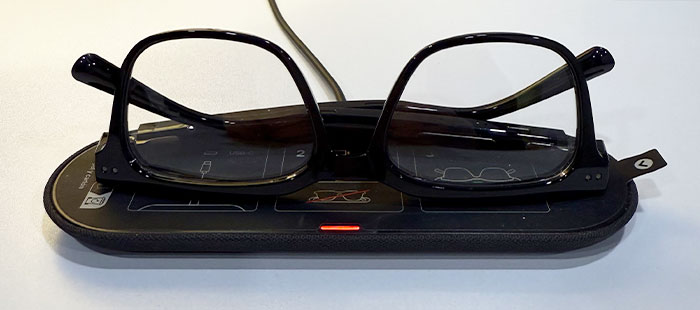Combining eyeglasses and hearing aids into a single device is an old-school premise that promises convenience and discretion. Nuance Audio's hearing glasses aim to deliver on this promise by integrating hearing technology directly into the frames of eyeglasses.
However, while the concept is appealing, our evaluation—and firsthand experiences—reveals several significant shortcomings that potential users should consider.
A Frustrating First Impression: Missed Appointments and Lack of Preparation
Our team’s in-store experience highlights a critical flaw in the Nuance Audio rollout: a lack of readiness and customer support. A recent visit to a LensCrafters location for a scheduled demo of the Nuance Audio hearing glasses revealed that demo equipment was inoperable. The staff was unable to provide a working product to test, and we were not allowed to purchase the glasses without completing the demo—effectively ending the visit with no resolution.
Even when asking for more information, we were left with vague guidance. A small static display was available, and one employee offered limited details: the glasses come in two sizes, two colors, and three styles. The employee stated they feature two sound modes (omnidirectional and directional) but could not explain the functional difference or use cases for these modes. The glasses were described not as hearing aids, but as “amplifiers”, a concerning distinction for anyone with true hearing loss.
Testing Process: MDHearing's Scientific and Firsthand Evaluations
Despite the initial disappointment, we were eventually able to obtain a pair of Nuance Audio eyeglasses for testing after contacting a different LensCrafters location and placing an order. The glasses arrived approximately one week later.
We evaluated the glasses using both technical equipment and real-world scenarios. First, we tested the Nuance Audio hearing glasses using CARL, an anthropomorphic head and neck with realistic ears. Instead of eardrums, CARL has MEMS microphones designed to mimic human hearing. We played CARL a series of voices and sounds through a calibrated speaker positioned three feet away to simulate common listening environments.
In addition, several human test users wore the Nuance Audio eyeglass hearing aids in their daily lives—at work, at home, and in busy settings such as restaurants. These tests helped us gather insight into how the device performs under real-world conditions.
How the Glasses Work: Touch Controls, Microphones, and More
Nuance Audio eyeglass hearing aids function through tiny microphones embedded in the temple arms of the glasses, which pick up sound from the environment and direct it toward the wearer’s ears via small speakers. The glasses often rely on open-air conduction rather than ear domes, which can result in sound leakage and reduced clarity.
Nuance Audio eyeglasses connect to smartphones via Bluetooth, allowing for basic controls such as program and volume adjustments. They also offer a multi-function button on the frame arms for adjusting the volume or turning the glasses on and off and a tap control on the arm of the glasses to change the mode. Customization is limited with four pre-set programs and two audio modes.
Sound Quality: Lacking Clarity and Naturalness
One of the primary functions of any hearing aid is to provide clear and natural sound amplification.
In our tests, Nuance Audio eyeglass hearing aids fell short in providing clear and natural sound amplification. Users reported that sounds were noisy and tinny and lacked the clarity found in traditional behind-the-ear (BTE) hearing aids. This diminished sound quality can make it challenging to follow conversations, especially in noisy environments, defeating the purpose of wearing hearing aids in the first place.
No Access to Licensed Hearing Specialists
Nuance Audio eyeglass hearing aids are sold over the counter (OTC) in eyecare centers with little to no specialist involvement. Customers are expected to self-fit using general presets.
If issues arise, support is limited to general customer service rather than licensed hearing healthcare professionals. This can be a major barrier for users with specific hearing needs or those who are not comfortable adjusting settings on their own.
Proper hearing care often requires support from licensed audiologists and hearing instrument specialists, who are trained to evaluate hearing loss and provide ongoing troubleshooting and fine-tuning. Without professional support, users risk poor sound quality, discomfort, and dissatisfaction. Nuance Audio may offer convenience and style, but they leave a significant gap in the quality of care.
Dual Dependency: Risk of Losing Two Essential Devices
By combining eyeglasses and hearing aids, Nuance Audio creates a single point of failure. If the device malfunctions or requires repair, users are left without both their vision correction and hearing assistance. This dual dependency can be particularly problematic, as it may take time to repair or replace the device, during which the user is deprived of two critical sensory aids.
Battery Life: Insufficient for Daily Use
Nuance Audio eyeglass hearing aids are equipped with rechargeable batteries. However, users have reported the battery life does not last an entire day, often requiring recharging after just 6 to 8 hours of use. This limitation can be inconvenient, especially for individuals with long workdays or active lifestyles, as it necessitates carrying charging equipment and finding time to recharge the device during the day.
During this time users will also be without their eyeglasses, as it is necessary for the Nuance Audio eyeglass hearing aids to sit on a pad while charging.
A Historical Perspective: Lessons from the 1950s
The concept of combining eyeglasses and hearing aids isn't new. In the 1950s, similar devices were introduced but failed to gain long-term popularity due to practical limitations and user dissatisfaction. Despite advancements in technology, the core challenges of integrating these two essential devices persist. Explore the history of hearing aid glasses from the 1950s.
Conclusion: Innovative Design, but Practical Limitations
While Nuance Audio eyeglass hearing aids offer a sleek and integrated solution for those needing both vision and hearing assistance, the practical drawbacks—subpar sound quality, the risk of losing two essential devices simultaneously, limited battery life, and lack of licensed hearing specialist support—make them a less viable option for many users.
Individuals considering this product should weigh these factors carefully and may find that traditional hearing aids, possibly in conjunction with separate eyeglasses, provide a more reliable and effective solution.
MDHearing: A Discreet Alternative to Eyeglass Hearing Aids
MDHearing’s OTC hearing aids offer a discreet and reliable alternative to eyeglass hearing aids, catering to users who value both functionality and subtlety. Our devices can be worn comfortably at the same time as regular eyeglasses, allowing you to wear your preferred frames without interference or discomfort. This compatibility is a major benefit for individuals who rely on both hearing and vision correction, as it eliminates the need to compromise or invest in specialized hybrid eyewear.
In addition to their discreet profile and versatility, MDHearing aids are accessible and easy to use—with no need for a prescription or custom fitting. We offer free lifetime support from licensed, U.S.-based hearing professionals and a 45-day risk free trial. Reconnect with the world around you without compromising on style or comfort.
Want to see if MDHearing will work for you? Take our quick and easyx online hearing test and get your results instantly.
TAKE ONLINE HEARING TEST


